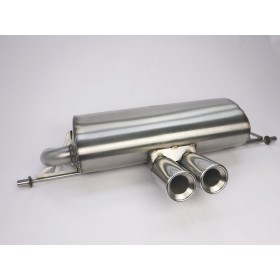
- Welcome, ( Log in )
- Your Account
- Cart: (empty)
Categories
- Lotus Merchandise
- Performance Kits & Tuning
-
Elise S1
- Accessories
- Bodywork & Fittings
- Brakes
- Carbon Fibre
- Cooling & Lubricants
- Electrical & Sensors
- Engine Management
- Engine Tuning Parts
- Exhaust Systems
- Exterior Accessories
- Fuel System
- Gauges & Instruments
- Gearbox & Clutch
- Harnesses & Safety
- Induction Kits
- Interior Accessories
- Performance Kits
- Race Seats & Trim
- Replacement Parts
- Superchargers
- Suspension & Steering
- Wheels & Tyres
-
Elise S2 (Rover)
- Accessories
- Bodywork & Fittings
- Brakes
- Carbon Fibre
- Cooling & Lubricants
- Electrical & Sensors
- Engine Management
- Engine Tuning Parts
- Exhaust Systems
- Exterior Accessories
- Fuel System
- Gauges & Instruments
- Gearbox & Clutch
- Harnesses & Safety
- Induction Kits
- Interior Accessories
- Performance Kits
- Race Seats & Trim
- Replacement Parts
- Superchargers
- Suspension & Steering
- Wheels & Tyres
-
Elise S2 (Toyota)
- Accessories
- Bodywork & Fittings
- Brakes
- Carbon Fibre
- Cooling & Lubricants
- Electrical & Sensors
- Engine Management
- Engine Tuning Parts
- Exhaust Systems
- Exterior Accessories
- Fuel System
- Gauges & Instruments
- Gearbox & Clutch
- Harnesses & Safety
- Induction Kits
- Interior Accessories
- Performance Kits
- Race Seats & Trim
- Replacement Parts
- Superchargers
- Suspension & Steering
- Wheels & Tyres
- Elise S3 (2011 on)
-
Exige S1
- Accessories
- Bodywork & Fittings
- Brakes
- Carbon Fibre
- Cooling & Lubricants
- Electrical & Sensors
- Engine Management
- Engine Tuning Parts
- Exhaust Systems
- Exterior Accessories
- Fuel System
- Gauges & Instruments
- Gearbox & Clutch
- Harnesses & Safety
- Induction Kits
- Interior Accessories
- Race Seats & Trim
- Replacement Parts
- Superchargers
- Suspension & Steering
- Wheels & Tyres
-
Exige S2 & S (2ZZ)
- Accessories
- Bodywork & Fittings
- Brakes
- Carbon Fibre
- Cooling & Lubricants
- Electrical & Sensors
- Engine Management
- Engine Tuning Parts
- Exhaust Systems
- Exterior Accessories
- Fuel System
- Gauges & Instruments
- Gearbox & Clutch
- Harnesses & Safety
- Induction Kits
- Interior Accessories
- Performance Kits
- Race Seats & Trim
- Replacement Parts
- Superchargers
- Suspension & Steering
- Wheels & Tyres
- Exige S (V6)
- Exige 410 & 430
- Evora & Evora S
- Evora 400 & Sport 410
-
2-Eleven
- Accessories
- Brakes
- Carbon Fibre
- Cooling & Lubricants
- Electrical & Sensors
- Engine Management
- Engine Tuning Parts
- Exhaust Systems
- Exterior Accessories
- Fuel System
- Gauges & Instruments
- Gearbox & Clutch
- Harnesses & Safety
- Induction Kits
- Interior Accessories
- Performance Kits
- Race Seats & Trim
- Replacement Parts
- Superchargers
- Suspension & Steering
- Wheels & Tyres
-
340R
- Accessories
- Brakes
- Carbon Fibre
- Cooling & Lubricants
- Electrical & Sensors
- Engine Management
- Engine Tuning Parts
- Exhaust Systems
- Exterior Accessories
- Fuel System
- Gauges & Instruments
- Gearbox & Clutch
- Harnesses & Safety
- Induction Kits
- Interior Accessories
- Race Seats & Trim
- Replacement Parts
- Superchargers
- Suspension & Steering
- Wheels & Tyres
- Europa & Europa SE
- Vauxhall VX220
- Elan M100
- Excel & Excel SE
- Esprit (All models)
- Lubricants & Brake Fluids
- Special Orders
Cart
Our Signature “QT” (Quiet Technology) exhaust silencer for the V6-engined Exige and Evora models, has been developed to pass the increasingly stringent noise limits being imposed by track day operators.
During back-to-back testing on an Exige EX460 (460bhp), the silencer recorded drive-by sound level averages of appx 85dB at Brands Hatch, whilst the OEM silencer recorded 97dB (and was black flagged). All tests were carried out with exhaust hot and scrutinised by the MSVT monitors.
Static sound levels recorded were 93dB and 96dB, respectively. The EX460 spec Exige features less restrictive induction and manifold configuration, so standard cars produce even better results.
The sound level of the exhaust has not been achieved at the cost of power. Flowbench testing against OEM and other silencers during development, the silencer is proven to flow sufficiently well to deliver the full power of our EX460 kit.
The silencer does not feature any loose-packing type material, so does not require re-packing. It is a direct replacement rear silencer and works with any manifold and link pipe combination. The twin round tailpipes have a diameter of 85mm, and feature perforated internals and machined tips.
Developed and produced from scratch to our own specifications, using bespoke parts, by our industry-accredited UK-based exhaust manufacturer. This silencer has full E-type approval, and is road legal for use throughout Europe including Switzerland. As you can imagine we are quite proud of it!!
This silencer is now available for all vehicles with the Evora 400 type exhaust configuration - this includes Evora 400/410/430 and Exige 380/430 models. During static testing, the exhaust noise level was reduced from 103dB with the OEM exhaust to 93dB using the QT silencer.
Please note that exhaust clamps supplied may differ from those shown depending on availability.
Power comparisons of a new Evora 400 with factory exhaust versus the QT exhaust on an EV4-460 upgrade carried out and tested at our workshops. Minimal losses were recorded and improved flow at higher RPM was achieved as expected from flow bench testing during development.








